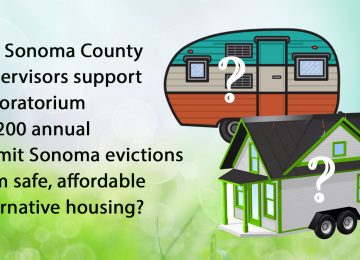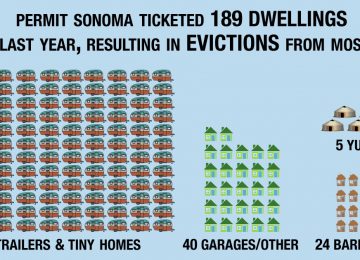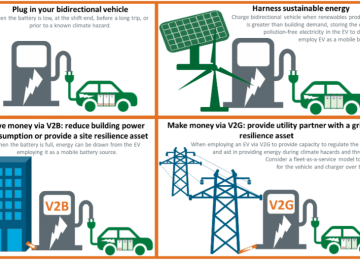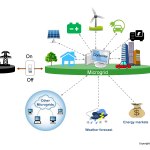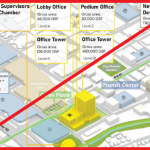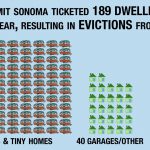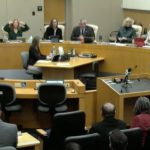Throughout the past several years, as California has pushed for more renewable energy development, utility companies have, at the same time fought against those efforts, sometimes even illegally using ratepayer funds to lobby against climate solutions.
Utility opposition to renewable projects has been most conspicuous when climate solutions threaten to reduce their profit-making transmission monopoly. In recent years, California utilities have pushed the legislature and California Public Utilities Commission (CPUC) to make changes to existing or new programs that will disincentivize renewable energy. This has included changes to rooftop and apartment solar, opposition to community solar, and most recently proposing income based, fixed monthly charges for all ratepayers.
At the 2023 California Climate Summit, panelist Erin Weber Kiel, Government Affairs rep for Sunnova, one of the largest rooftop solar companies in the country said, “The single best thing we can do is consume energy where we produce it.”
But California’s utility giants PG&E, SDG&E and SCE have no interest in growing renewable power that they do not control, even as the state is at risk of missing its mandated 2045 decarbonization targets. Instead, the utilities have sought to reduce the rates that Californians are paid for the solar they generate, and in some cases to prevent them from using that energy.
Even California’s robust rooftop solar Net Energy Metering (NEM) program has been. Now, after changes pushed for by the big three utilities, the nation’s most successful rooftop solar program is at risk of disincentivizing rather than incentivizing solar.
Until the program was changed in December, 2022 homeowners with solar were able to use the solar they generate, selling any access back to the grid at the same rate they would purchase it for. Following lobbying by the utilities, the rate that homeowners are paid for the energy they sell back to the grid was cut by 75%.
Quoted in CalMatters, Woody Hastings, The Climate Center’s energy program manager, said “California needs more solar power — not less.”
“Just as more middle and lower-income Californians are putting solar panels on their rooftops, the new rules adopted by the CPUC today threaten to slow the growth of clean energy across the state,” he said.
California has more than 1.5 million rooftop solar systems and these systems produce roughly 10% of the state’s total electricity. While the CPUC has limited the financial feasibility of rooftop solar, the California Energy Commission in its latest SB 100 joint agency report notes that CA needs to add more solar. In order for the state to meet its ambitious climate goals, both rooftop and utility solar need to triple by 2045. If it isn’t incentivized, it’s hard to understand how this new rooftop solar will be built.
Related to the changes to rooftop solar’s NEM program are parallel changes to NEMA. Net Energy Metering Aggregation is the program that has been in place since 2014 allowing properties with multiple meters – like apartments, farms, and schools – to generate and use energy throughout multiple buildings on the same property. This program worked like rooftop solar; the property owner uses the energy they produce and sells the remainder back to the grid.
The Solar Rights Alliance is urging Californians to call Governor Newsom, who appointed the CPUC Commissioners, at (916) 445-2841and urge his office to protect solar for renters, farmers, and schools. The CPUC will be voting on this decision on November 16.
The new program will force any property with multiple meters to first sell their energy back to the grid at a wholesale rate and then buy it back at the retail rate before using it.
Kevin Johnston, associate counsel with the California Farm Bureau, said the original program allowed farmers who couldn’t use part of their land due to drought for solar generation, but the changes would make that untenable.
“With the NEMA program, you can say, ‘ok, electricity rates are going through the roof, if I can maybe make that investment in a solar array, I can offset some of my consumption, and it makes sense for me financially,’” Johnston said.
Johnston explained, “But with the new program, that math is going to be so off, and you’re going to do something else with that parcel…it’s a business at the end of day and you’re trying to make those kinds of decisions and margins are thin and so you’re not going to want to invest in a solar array.”
A coalition of farmers and agricultural groups, including Harris Ranch, EcoFarm, and the Del Rey Packing Company, wrote a letter to the CPUC opposing virtual net metering.
The proposed VNEM rate structure also brings into question whether projects like solar parking lot covers at schools will be viable and makes it far less likely that solar will be placed on multifamily rooftops.
As reported in Canary Media, over 150 local elected officials signed a letter decrying the proposal as “fundamentally unfair,” as it would “force tenants, schools and farms to buy all of their power from the utility even when it is generated on their own rooftop or field.”
VNEM presents such a financial problem for school districts who have invested in solar that the Oakland Unified School District held a press conference calling on state officials to block it. “To have a hit like this to our budget means those dollars are going to have to come from some place else,” OUSD board President Mike Hutchinson said. “If they are coming from the general fund, that means those dollars are directly going to hurt our ability to provide the education that we need to provide.”
Yet another example of utilities blocking solar is the ongoing community solar debate. In 2022, the legislature passed AB 2316 directing the California Public Utilities Commission to develop a rate structure and plan to implement community solar in the state. Community solar allows households to subscribe to a solar generation site and get reductions on their bills in the same way that homeowners with rooftop solar are paid for the power they generate.
There are more benefits. Like other decentralized solutions that use the energy near to where it is generated, it can sidestep the need to expand the transmission grid that carries power from far away. Limited transmission grid capacity is the single greatest obstacle to bringing more renewable energy online more quickly and meeting the state’s goal of eliminating the burning of fossil fuels (natural gas) for electricity, along with gas and diesel powered engines.
Yet utilities have sought to undermine community solar at the CPUC by pushing for a rate structure that environmentalists and industry experts say would make the program economically unviable. Brandon Smithwood, senior director of policy at community solar developer Dimension Renewable Energy, was quoted in Canary Media, “On community solar, it’s everyone versus the utilities.”
At the same time that utilities have sought to cut back these solar programs they have struggled to provide enough energy to connect traditional developments to the grid, and California has continued to fall behind on its clean energy mandates.
It’s worth noting here that this is only a sampling of the most egregious and recent examples of utilities using their influence to hinder or kill climate solutions that threaten their bottom-line.
With climate change and electrification major policy goals for the State of California, it begs the question as to why nearly all of these solutions are being blocked or curtailed in a way that benefits the utility companies financially. There is a consistent pattern of the CPUC, and to a lesser extent, the state legislature, siding with utilities over environmentalists and solar industry stakeholders.
The CPUC has been accused of regulatory capture, favoritism towards utilities, and some lawmakers have even called for the agency to be broken up.
In an interview with L.A. Times reporter Sammy Roth, UC Santa Barbara political scientist Leah Stokes said, “The biggest problem we have with utility regulation in this country is the capture of independent agencies by utilities,” Stokes told me. “Electric rates are higher than they should be. We have way more polluting infrastructure than we need.”
Syndicated columnist Thomas Elias in writing about utilities’ push towards an income based rate structure wrote “That’s a form of putting the fox in charge of the henhouse, considering the commission’s long history of corruption, scandal and favoritism of utilities over their customers.”
“The central issue is the centralization of power. Microgrids are challenging the system in a way not seen for 100 years.” Allie Detrio of Reimagine Power, an industry consultant, said at the 2023 CA Climate Summit. That centralization of power is what drives utility profits, so it’s understandable why they would seek to stymie efforts to move away from centralization.
Utilities often couch their opposition in the language of equity, claiming that solar makes electricity more expensive for lower income ratepayers who do not have solar themselves. While there may be some merit to this argument, the debate is far from settled, and ignores the state-funded CARE program that provides a 30 to 35% reduction in rates for lower income ratepayers. More importantly, killing the nation’s most successful solar program runs counter to the widely supported state agenda to replace fossil fuels with renewables as quickly as possible.
Utility profit protection is again on display with the new so-called utility tax. In July 2022, at the end of the session, the state legislature passed budget trailer bill AB 205. The bill had no connection to the budget, but because it was passed as a trailer, it only needed a 50 percent vote to pass. Trailer bills are a much maligned approach that allow legislators to pass sweeping policy changes with little input.
One section of AB 205 did just this. According to CalMatters “One of its many provisions, under the title of “miscellaneous,” declared it would “authorize the Public Utilities Commission to establish reasonable fixed charges on default residential customer rates to help stabilize rates and equitably allocate and recover costs among residential customers in each electrical corporation’s service territory.”
AB 205 removed the existing $10 per month cap on monthly fixed charges and mandated that new income-based fixed charges would be imposed on all ratepayers.
After the bill was passed, it went to the CPUC for implementation. There, utilities have proposed charging most residential ratepayers a fee of $30 to $70 per month. Even a $30 per month fixed fee would be three times the national average.
Alexis Wodtke, a regulatory attorney, wrote in the San Francisco Chronicle “The commission is creating a new rate structure based on customers’ income that will force most people to pay high fixed fees that don’t take into account how much energy they use. And it is doing it all behind closed doors. The commission has denied requests to hold public hearings on the proposal.”
Opponents have labeled these fees a utility tax because they will be mandatory and based on income. The Solar Rights Alliance, along with hundreds of other groups sent a letter to the Legislature asking for the tax to be repealed.
The letter was signed by the California Democratic Renters Council, the Center for Biological Diversity, the Western Center on Law and Poverty, the Indivisible Green Team, and numerous 350.org chapters. These are just a few of the many, varied groups that are calling for the utility tax to be blocked.
The letter states “Millions of Californians who live in apartments, condos, and small homes that use less energy would see their utility bills increase. Californians already suffer under the highest electricity bills in the country. This would have devastating consequences for working families.”
The letter continues, “High fixed charges discourage all forms of energy conservation, such as turning off the lights, energy efficiency…. For years, working families have practiced energy conservation as a way to lower their monthly bills. The Utility Tax proposals will take control away from these households, degrading their ability to manage their energy bill.”
With the utility tax, once again, we see the utilities proposing rate changes that protect or expand their profits at all costs. Regardless of what impact these changes have on renewables and ratepayer bills, the CPUC consistently follows utility guidance.
California needs all of the renewable energy it can create, but with utility opposition at every turn and regulatory capture at the CPUC, only the climate solutions that don’t cut into utility profits have a chance of passing.



